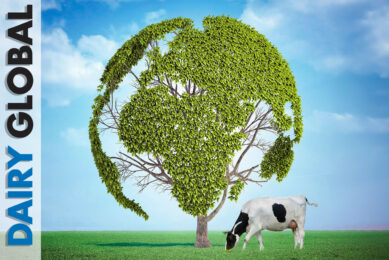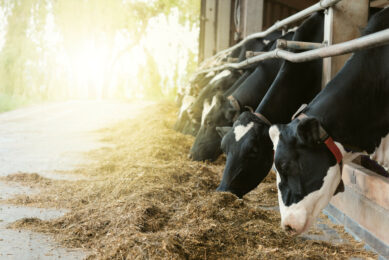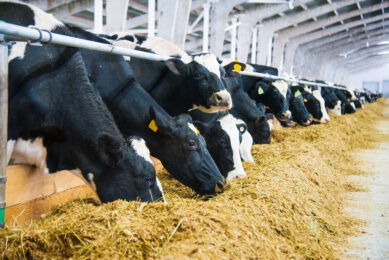Hydroponic systems: Dairy farms in Italy, Canada and the US
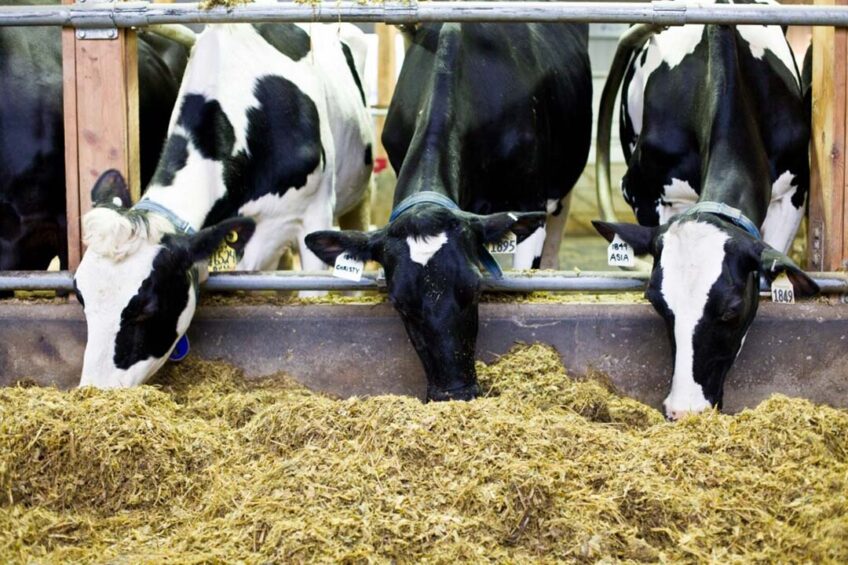
Dairy Global readers were first introduced to the concept of cultivating feed indoors in 2021. We presented HydroGreen, a US company owned by British Columbia, Canada-based CubicFarms, which markets hydroponic crop growing systems.
For those wondering if this concept would catch on, we can report that HydroGreen has been going strong and is poised for major expansion in 2024.
As mentioned in our first story, dairy farmers would look to growing their own high-quality forage to add to the ration for several reasons. In an era of increased risk of drought and supply chain disruption (even within a country, let alone across borders), this approach provides a consistent and secure supply of part of the ration, reducing reliance on other ingredient sources. Land restriction is another big factor driving interest in HydroGreen systems, explains sales coordinator Savannah Cahoy.
The hydroponic system, producing sprouted wheat or barley, also optimises water usage (more on that later) and provides more control over herd nutrition. The fresh, high-quality, high-energy, low-potassium forage can be included in the ration at a minimum level of 15% for dairy cattle (30% for beef).
Dairy in the Italy, Canada and the US
There are currently 11 HydroGreen units on beef farms across the US, Canada and Japan, and 4 on dairy farms in the US, Canada and Italy. On 6 November 2023, 2 more HydroGreen DGS 66 Machines were ordered by Golden Rule Dairy a family-owned Jersey dairy operation in Elfrida, Arizona. The farm had the first one installed in July.
There are more orders in Europe and Mexico, says Cahoy. “Both dairy and beef markets are growing quickly, but I would say we have more dairy farmer interest globally in our sales pipeline right now due to their quicker adaptation to technology.”
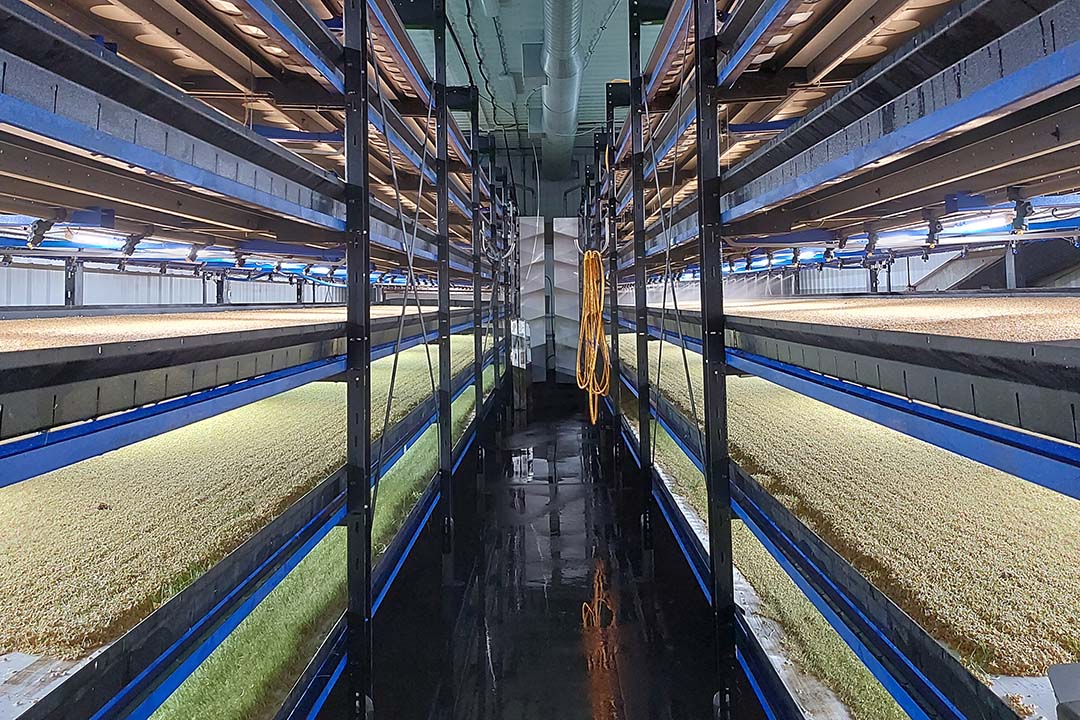
And another business model is actively being pursued: HydroGreen is rolling out its own centralised feed centres with the forage produced sold directly to farmers. “Our first feed centre installation will be in the Central Valley of California with 20 of our GLS 808 machines,” says Cahoy. “Harvesting only 4 of the machines will give a total of 68 tonnes of fresh feed per day.” (With a 5-day staggered harvest cycle, 4 of the 20 machines are harvested daily.) About 5 dairy farms are already signed up.
Research trials in Canada
Ecofarm BC is a research dairy farm and agritourism operation (tours, events, dairy products) in Abbotsford, British Columbia, that started in 2010. Its team, including general manager Bill Vanderkooi, conducted a performance trial on HydroGreen 2 years ago. The research herd included 45 cattle – primarily Holstein with a few Jersey.
Vanderkooi reports that the HydroGreen trial showed a numerical increase in milk yield compared to the control group in the herd, but it was not statistically significant due to the small sample size.
A future research trial will involve testing of HydroGreen and other ration components that may reduce enteric methane production. HydroGreen states that feeding its product has been shown to reduce methane by up to 1 metric tonne of CO2 equivalent per cow per year.
The HydroGreen units that supplied the Ecofarm trial (sprouted wheat) were actually purchased in 2018 and 2020 for a sister operation of Ecofarm, called Hank’s Grassfed Beef, to deliver consistent, high-quality year-round products to customers.
These cattle are finished with a ration that contains grass haylage and fresh HydroGreen sprouts. “The units are working well,” says Vanderkooi. “We have about 1000 Angus-Holstein and finish about 14 a week. The cost for the HydroGreen feed is more than grain, but comes with lots of benefits. Our customers really like the flavour and consistency.”
Independent nutritional and cow performance analysis from 2022 found that HydroGreen sprouts have high digestibility, sugar concentration and energy content, making them a good replacement in dairy cattle for high-energy forages like corn silage, and alfalfa and alfalfa/grass forages.
It was concluded that HydroGreen sprouts can also replace other fibre-rich co-products such as cottonseed, corn gluten feed and soyhulls. Co-products with high sugar concentration like molasses and whey are not needed in HydroGreen diets.
Water Buffalo in Italy
Masseria Cilentana in Agropoli is a Mediterranean water buffalo dairy that has been using HydroGreen for almost 4 years. The herd is about 500, and the farm has ranked among the top water buffalo dairy farms in the region for milk quality and production averages, according to Nick Del Verme at Feed Solutions, which distributes HydroGreen technology in Italy. Del Verme contacted the family and gathered information on their HydroGreen journey.
“At first the intention in 2019 was to seek a product that could help us decrease the cost on the ration as the feed price was quite high at that time,” the family explains. “While the price is very sensitive to climate, world events, etc., we thought it would be wise to minimise how vulnerable we were. After searching and finding this fodder, we found that there were many more benefits that fell outside of economics. Since the installation, we have seen improved fertility, decreased veterinary expenses, and an overall better physical appearance of the herd.”
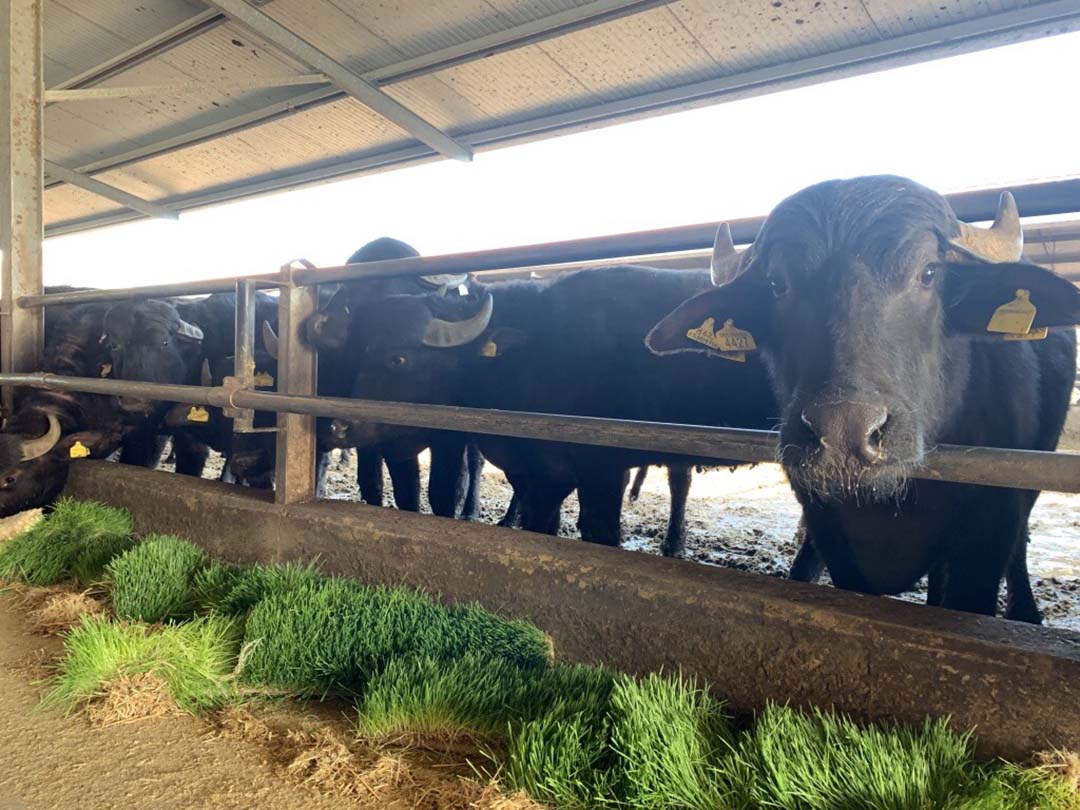
With 2 HydroGreen DG66 modules, one installed in mid-2019 and the other in mid-2021, the dairy can produce 2,500 kg per day. “The machines are incredibly reliable and easy to maintain,” says the family. “We have found that keeping everything clean is the basis of everything going smoothly. There have been hiccups, as with any machine, but the support we have received from HydroGreen has been second to none. They have been able to troubleshoot with us remotely and even make adjustments to the software via internet connection.”
The farm’s lactating cows eat only HydroGreen – 16kg each per day – replacing a pre-mixed feed. Whilst the family who owns Masseria Cilentana notes that HydroGreen sprouts are one of the more expensive parts of the ration, they find it’s more consistent compared to the pre-mix in overall quality and nutrition quality, and therefore worth growing.
System origin and basics
The idea for HydroGreen originated with an American beef farmer by the name of Dhil Grohs, who ranches in an area of Idaho with limited rainfall. He developed a hydroponic feed production system he could rely on to meet some of his cattle’s needs and named the system HydroGreen. It was acquired in 2019 by CubicFarms.
The system is technologically advanced yet very simple, with automated seeding, watering and harvesting. No fertilizer is required. Once ready for harvest, the sprouted wheat or barley rolls off an automated belt like a carpet and is shredded, ready to add to the ration.
Costs overview
The HydroGreen DGS 66 unit is geared towards operations of 100-200 cattle, and currently costs US$120,000 in a current sales promotion. The larger GLS 808 modules cost US$312,000 each.
ROI is, of course, individual to each operation. There are capital costs of the units, building and installation. The units must be housed in an existing or newly-constructed building, outfitted with the appropriate plumbing, HVAC and electrical. Ongoing operational and input costs include electricity (and perhaps water) and seed. Cost savings can be found in reduced labour and fuel costs involved in feeding other ingredients that HydroGreen forage replaces, including transportation.
As an example, Burnett’s Land & Livestock in Wyoming had been transporting cottonseed from Texas for part of their dairy cattle ration before they installed HydroGreen. Burnett’s invested US$1.5 million in CubicFarms in 2021 and received 12 GLS 808 units as part of the deal, making up part of the ration for 2,000 cows daily.
If certified organic grains are sprouted and the rest of the feed is organic, the resulting certified organic beef or dairy products can be sold at a premium. As mentioned, there are also benefits to the health and performance of cattle to feeding HydroGreen forage, and research continues.
A look at the Central Valley
As mentioned, at the same time CubicFarms continues to sell units to individual farmers, it intends to grow its new business model of feeding forage from central feed centres across the US, Mexico and some European countries where the market need exists. “The biggest challenge we are facing is capital funding to install such large facilities,” says Cahoy, “but the good part is, it is not a challenge to find customers for these installations who want the feed for their herds.”
On that note, let’s take a closer look at the HydroGreen Feed Centre planned in the Central Valley of California, an area that covers about 47,000 km2 and is home to many dairy farms. The Valley also supports production of more than half of the fruit, vegetables and nuts grown in the US. The majority of the Central Valley is irrigated and water availability is a very serious concern. The LA Times reported about a year ago that groundwater levels are critical.
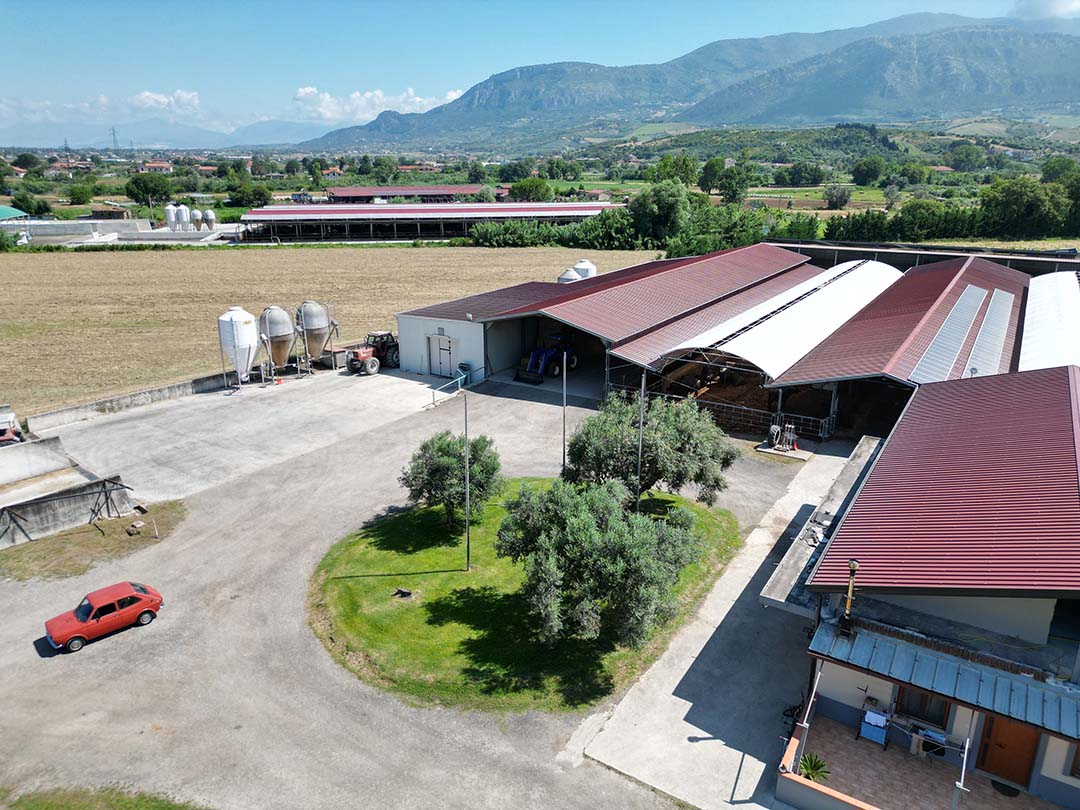
According to other US media reports, dozens of dairies in the San Joaquin Valley (in the middle of the Central Valley) are currently planning to expand, and herd sizes have already increased very significantly over the last decade or so, trending up 36% since 2011. Water is used in the region’s dairy farms for cleaning milking equipment, watering dairy cattle (milk is 87% water) and to combat heat stress. According to the California Energy Commission, “heat stress in dairy cows remains a major cause of diminished milk production”.
Water is conserved in relation to feeding dairy cattle in the Central Valley through the use of about 70 by-products, many locally-produced. “Absent dairy by-product feed, much more land and water resources would be needed to maintain the California herd,” notes a group of state-based academics. Another group of scientists has noted that over the past 7 decades, “improved crop genetics and management have contributed to large efficiencies in water utilization” in the California dairy industry.
Returning to HydroGreen, it’s important to ask how the use of its forage in part of the dairy cattle ration might impact water use in the Central Valley. Hydroponic production is well known for using very little water compared to field crops. However, in addition to that, there are 2 main options a dairy operation can use, says Cahoy, to conserve water further.
“The first is a water recycling system that can recycle up to 90% of the water used on the machines,” she explains. “A second option is applicable if the machines are installed on farm, where the run-off water is pumped to the cattle to drink. There are also benefits in the water when it’s given to the herd this way, with enzymes present that are created in the growing process.”
Growing feed from liquid manure
Another dairy cattle feed project is underway in California to feed dairy cattle while conserving water. The project, called ‘Aquatic Crop Production as a Nutrient-to-Feed Solution for California Dairies’ is receiving US$2 million from the California Department of Food & Agriculture.
A company FYTO will install a commercial-scale, automated production system at Fiscalini Farms to grow duckweed using water and nutrients from dairy manure effluent from the farm’s manure lagoon and anaerobic digester. FYTO and dairy industry partners will jointly validate the environmental impact, economic feasibility and the performance results from feeding the cattle duckweed as part of their diet. Duckweed (lemna or water lentils) are tiny fast-growing freshwater plants that contain 42% protein, omega fatty acids, antioxidants, calcium, iron, carbohydrates and many micronutrients.
Join 13,000+ subscribers
Subscribe to our newsletter to stay updated about all the need-to-know content in the dairy sector, two times a week.




